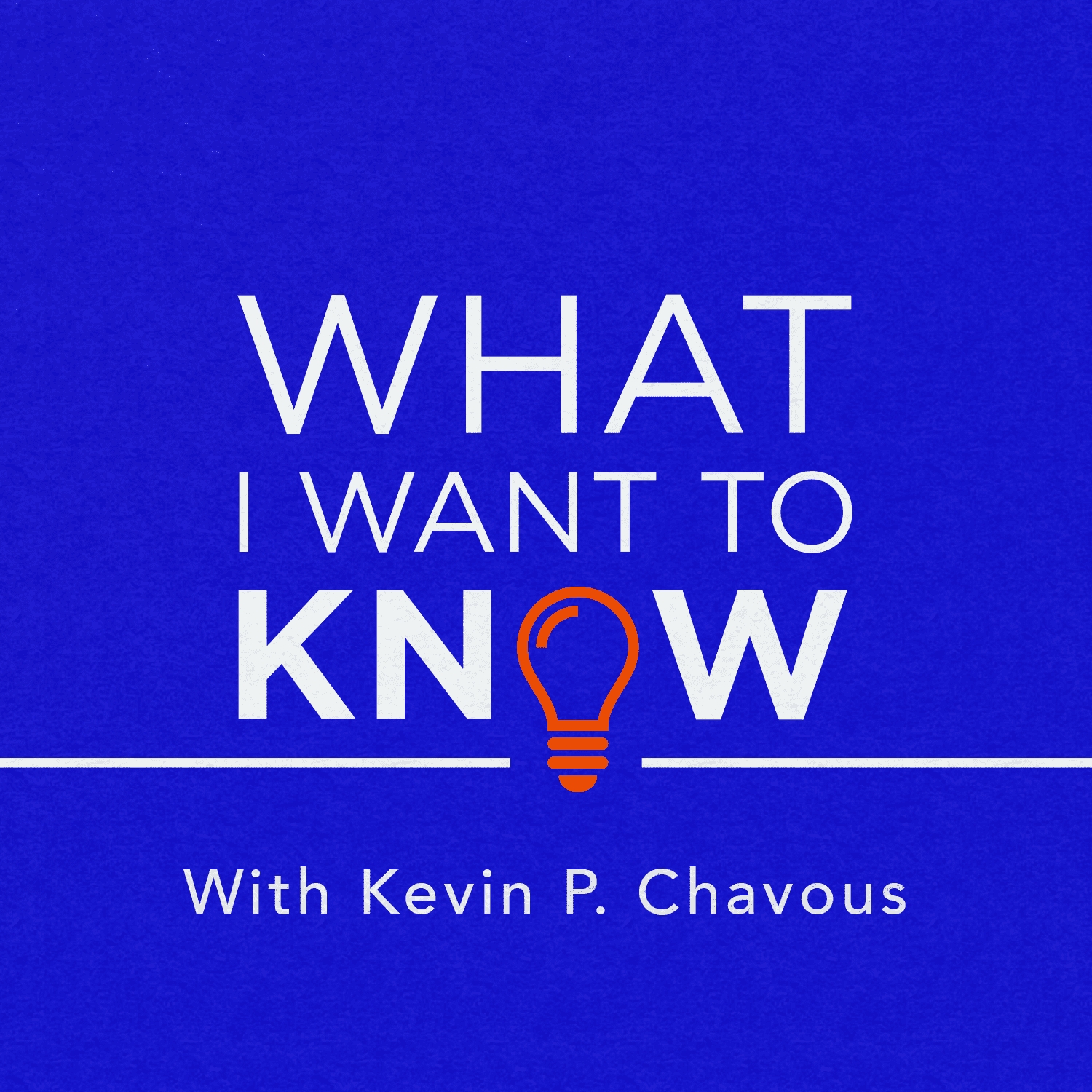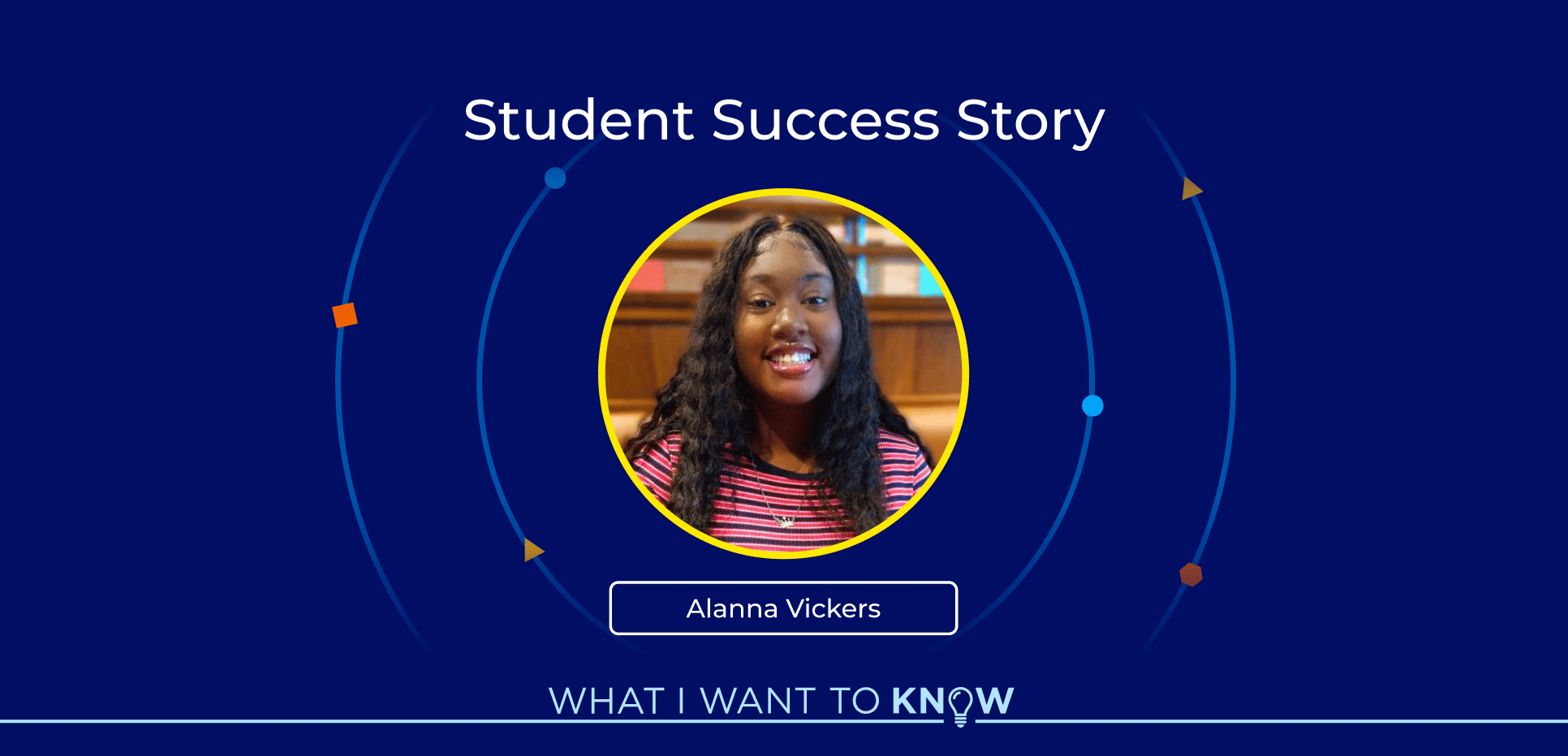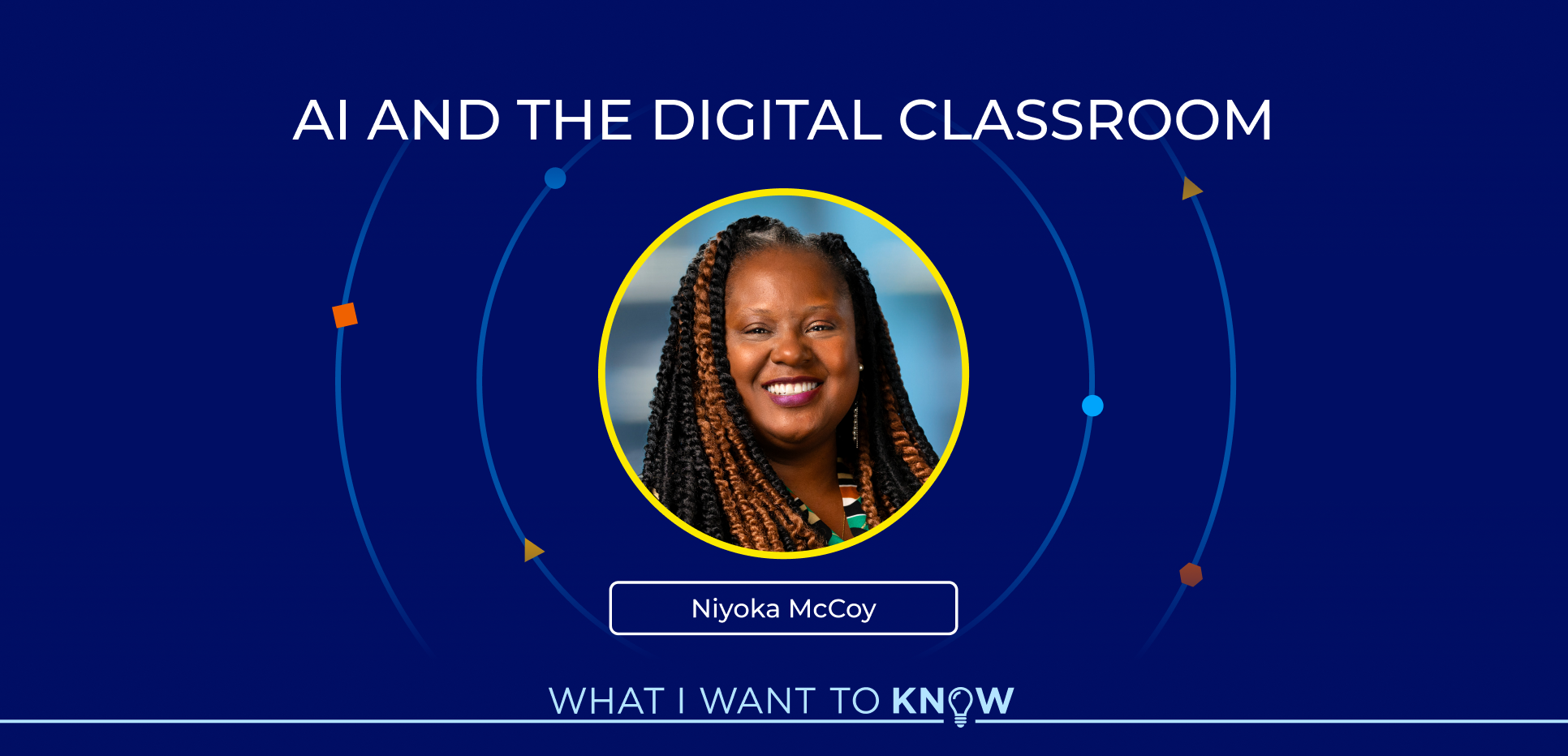In response to pandemic learning loss, many school districts across the country turned to intensive tutoring.
And studies have shown that methods like high-impact tutoring can increase a student’s learning and be more effective than standard methods.
Can tutoring help students overcome pandemic learning loss? What works and doesn’t work when it comes to tutoring? And why is it essential for all students to have access to effective tutoring methods?
In this episode, Dr. Susanna Loeb shares why access to tutoring is vital for students.
Listen to the Full Audio
Listen on: Apple Podcast, Spotify
Transcript
Kevin: In response to pandemic learning loss, many school districts across the country turned to intensive tutoring. And studies have shown that methods like high-impact tutoring can increase a student’s learning and be more effective than standard methods. Can tutoring help students overcome pandemic learning loss? What works and doesn’t work when it comes to tutoring? And why is it important for all students to have access to effective tutoring methods? This is “What I Want to Know.” And today I am joined by Dr. Susanna Loeb to find out.
Kevin: Dr. Susanna Loeb is the founder and Executive Director of the National Student Support Accelerator, an organization aiming to expand access to high-impact tutoring to address inequities in educational opportunities. She joins us today to discuss why access to tutoring is important for students. Susanna, welcome to the show.
Susanna: Thank you so much for having me. I’m really pleased to be here today and looking forward to the conversation.
Kevin: Everywhere I go, almost every teacher, almost every principal I talk to around the country, they’re talking more and more about tutoring. And we’re going to unpack that because you’re an expert in this area. But I always have to ask my guests in education, how the heck did you end up in the education field as a profession?
Susanna: Yeah. Oh, that’s such a good question because I actually started out really as an environmental engineer.
Kevin: Oh, wow.
Susanna: So it took me a little while to get here. But I think education is so fundamental to individuals leading thriving lives, really flourishing. And it’s also so important for any kind of large-scale societal change that we might want, addressing all of the issues, whether it be in environment and climate change or inequality, and peace. Education was so fundamental to everything that the more I got into my topic, the more I felt like education was drawing me. And then I had always worked with students and I loved that. And so it was really the combination of that personal experience and just the realization of the importance of education to our communities.
Kevin: So many people I know started out in one career and for similar reasons, as you just stated, they’re drawn to education and they make the transition. You know, how was that transition for you? Because even though you may have an interest in it, or you may feel drawn to it, if you’ve established a career in another space, it can be scary, it could be daunting, it could be financially, you know, troubling in some circumstances. Talk about that transition and what made it work so well for you.
Susanna: Yeah. So mine was really quite early on right after college, where I had one job and really my first job out of college as an engineer. And then I switched from there, because I was working with students outside of my regular hours.
Kevin: I see.
Susanna: So I was still in a very free time in my career, but still, I do think that education has a reputation right now of not providing kind of professional opportunities. And I just don’t think that’s the case. I think there are wonderful, rich, rewarding lives that you can have in education and many people can have. So both coming out of college or transitioning later on, I think there are great opportunities in there and it’s a really rewarding area to be working in.
Kevin: So talk to me about the organization that you’re the founder of, the National Student Support Accelerator, and then we can talk more about the specific role of tutoring, particularly in today’s society. But what led you to found this group?
Susanna: Yeah. So when the pandemic happened, it became clear, really early on in the spring of 2020, that many students were not going to school, were disconnected from school, and different students were missing different things. And I looked to the research to really try to understand what our best options were going forward. And really, not surprisingly, what emerged is the potential of what we’ve been calling high-impact tutoring to really be transformational for students.
So if you give a student an adult who knows them and can motivate them and engage them in the material, and then you focus time together, just on what that student is missing in order to do grade-level work, in order to really excel in a particular area, then you get kind of the attachment benefits of mentoring and the motivating benefits of mentoring. But it’s linked to being a student. And students can see that they can be successful.
And this is really reflected in what is a huge research base, almost 200 randomized controlled trials of tutoring programs that have worked. And so given that that seemed really the only thing we knew that could accelerate students’ learning, with Kathy Bendheim, a partner of mine, we founded this organization, the National Student Support Accelerator, not to do the tutoring, but to really create the research-backed tools needed by schools, tutoring programs, districts, policymakers in order to scale these kinds of resources so that more and more students could have access to them.
Before the pandemic, lots of higher-income families were making use of tutoring, but it really was rarely accessible to other students. And so the purpose of this organization is to provide the information, both to really encourage schools and districts to provide these kinds of services, but also to support them in implementing them, because it’s not an easy thing to do. And so we really could use these kinds of tools and understandings in order to do it well.
Kevin: So Susanna, I’m going to talk school superintendent speak, you know, and correct me if I’m wrong. So really what you are doing is you provide the research that demonstrates the value of tutoring, particularly high-impact tutoring. And that way, you know, superintendents who may run schools or school districts, where you have, you know, working class families or not the high-end families that are used to availing themselves of tutoring, high-impact tutoring for their kids, that they can go to their boards and say, “Hey, here’s the data. If you let me invest in this, or if we carve out some more money for this, the results are that.” I mean, that’s sort of the way I see what you’re doing.
Susanna: Yeah. I think that is definitely one aspect of it, is to take the research and make it easier for people to use that to say, “This is really what we should be doing.” But in a more kind of implementation, down in the details way, we also provide information on what are the likely barriers to doing this well, because you need a lot of people to tutor and you need to change schedules in schools to tutor, and you need to figure out how to identify exactly what each student needs who’s getting tutoring. And because of that, there are all these steps that can trip schools and districts up in implementing it. But if you know that you’re going to need to do those things ahead of time, then it’s much more likely to be successful. And so we work on those kinds of tools as well.
Kevin: Tutoring always has been an important supplement to day-to-day school. It has been utilized more by folks who come from families of means. But I think the spotlight grew even more as a result of COVID, when we saw the learning gaps that emerged as a result of COVID, and people were like, “Okay, we now need to figure out ways to have these kids catch up, or at least give them an opportunity to potentially catch up.” But there’s also folks who, and you mentioned high-impact tutoring, I want to ask you about that, but there are also folks who utilize “tutoring,” but it may not be effective, particularly for kids who come from the most challenged backgrounds. What works and what doesn’t work when it comes to just the whole idea of tutoring?
Susanna: Yeah, that’s a great question. So some people think of tutoring and they think of homework help, where a student has the motivation to come in and say, “I need extra help on this,” and “This is what I’m struggling with.” That can be very helpful for some very motivated students, but it’s really unlikely to have a big effect. First, the students who are disengaged and really most in need of support and this engagement are least likely to show up and choose this opt-in kind of tutoring. And then asking students what they don’t know is really hard. I mean, we don’t know what we don’t know. Students don’t know what they don’t know.
So the kind of tutoring that works is really the kind that builds these strong connections. So it happens often, at least three times a week. It happens with a consistent tutor, so they get to know each other and they feel responsible to each other. It is based on data so that the tutor knows just what it is that the student is struggling with. And it uses high-quality materials in order to provide high-quality instruction around the areas that the student is missing.
The only other thing to keep in mind is that it’s really important that it reaches the students who need it. So almost all the most effective programs happen during the school day, because that’s where you’re most likely to be able to reach the students who are less engaged in school, feel less like they can be successful in the work, and thus kind of have the most to benefit from the high-impact tutoring.
Kevin: And most people, or a lot of people, would think that tutoring happens after school. I mean, what you said is a little bit different than the image I know a lot of people have about tutoring and when it should take place. In order for it to work effectively inside a classroom or during the school day, you have to really be working closely in conjunction with school officials.
Susanna: That’s right. And that’s why it’s not so easy to implement. So one of the things we found is that it’s actually not too bad in terms of difficulty to implement it in the lower elementary school years, because their days are more flexible, the students are in one classroom. When it gets to middle and high school, you really have to think about how to do this. And it’s not necessarily the easiest thing to implement. It just happens to be the most effective thing to implement.
And so that’s really why we’re here at NSSA to say even though it’s hard, it’s one of the only things that we know of that can really kind of break the inequalities and the kinds of learning loss that we saw during the pandemic, and then really the inequalities that have been part of our system for such a long time. And so it’s worth doing that, even though it does require particularly to rethink some of the scheduling, to make sure that the students have those kind of periods set aside where they can have this individualized attention.
Kevin: Now your organization does not actually do the tutoring, as you said. But what about training? Do you make recommendations about the training of tutors, or how a school district or even a parent can ensure that they have someone who understands that distinction between just basic tutoring or high-impact tutoring and knows how to work with the teacher and utilize curriculum and meet students where they are? There’s a whole, you know, list of things that need to work right in order to have the student benefit from it, and I think training has to be a big part of that.
Susanna: That’s true. One of the kind of great things about tutoring is it really seems like lots of people can be great tutors. So the experienced master teacher can be a great tutor, but the student in college or just graduating from college can also be a great tutor. They just need different training. So the master teacher can do it maybe on her own or on his own, whereas the paraprofessional or student coming out of college really needs both training and these really high-quality instructional materials that tell them what they should be doing, particularly on the content side. It’s great though that we can have this variety, because it also means that students can have educators who come from their community, who may be closer in age and have similar experiences to them, so that you can get some of that relationship, the important relationship for students easier in some ways than if it was just a really more traditional educator workforce. But the training is important.
Actually, one of the nice things about doing it in schools and in districts is schools and districts know how to do this. So while scheduling is a problem and hiring is a problem there, like there are these things that are difficult for them, the training is not. They really know what they’re doing on that, and so that’s been good to see.
But there are good programs that operate in the after-school time, or operate at home or something like that. And those programs can really use training. There are good training materials out there. So a number of organizations have made training materials free. Saga tutoring is one of those, Saga Education is one. And with a number of tutoring programs, we just created what are called nano courses, these little 15-minute courses that can be put together in different bundles depending on what is right for the tutoring program, and those are available for free from Arizona State University. So there are a bunch of training programs out there that can help smaller tutoring organizations kind of have those resources.
Kevin: You said a couple things that really struck me. And one is, and the two things I’m going to mention do relate, but one thing you mentioned is relationships. And I think that particularly for kids who’ve had challenges who are behind, and they may have been, in many cases, historically behind in school, school is not viewed as even a safe place or a fun place. It can be a little off-putting to have a stranger come in their midst and try to work with them. And, you know, I know training kind of deals with this. But that notion of building a relationship with a student, I mean, isn’t that the first step?
Susanna: I completely agree with you that it is the first step, that we really don’t know of a way that’s better to motivate and engage students than to give them an adult who cares about them and who can meet them where they are, can celebrate their successes with them, and that the student really trusts them. And one of the, like, most rewarding things about what we’ve been doing in trying to expand tutoring is we just hear stories over and over again about how close the students feel to the tutors. We saw in one district that students come to school more on the days that they’re going to see their tutor, because they care so much about seeing their tutor. And it’s really how you have to start I think any kind of program that’s going to really help students who, as you say, have been disengaged from school.
I also actually think it’s one of the great inequalities in our system that kind of students can go along and then something will happen that will get in the way of them feeling like they can be successful. And if their families have resources, historically, they’ve provided this kind of tutoring. But we have never set up our system for the vast majority of students to get it. So, you know, they have a blip, students have a blip in our system, and they can just spiral down. Whereas with this kind of encouraging relationship and targeted instruction, you really could never have those kind of spirals down. And so I think that’s why it’s so important to get it as part of kind of our core instruction to recognize that so many students have these dips. We shouldn’t be surprised. This is just part of growing up.
Kevin: No, you’re absolutely right. And the other thing I was going to ask you, the second thing relates to something you said that also struck me. Anybody can be a good tutor. I think some people who may even have an interest in wanting to help out, you know, kids with challenges or a school district, they feel there are certain qualifications they need or what have you. But with the training, with the material, you know, we have seen, I have seen people from all kinds of backgrounds, diverse backgrounds are able to be effective tutors as long as they understand that they do have to, you know, engage in the training, understand, and know how to build the right relationships.
And one of the things I want to ask you along those lines, more and more school districts are even engaging in, because you talked about adults traditionally being the tutors, but more and more school districts are doing the peer-to-peer tutoring in classrooms, where students who, you know, do well on the math tests are able to . . . and they pair them with students who may not do as well, and they give them sort of I don’t know if you call it mini training, but just, you know, their own rules of the road. I mean, have you heard about that, and what are your thoughts about that?
Susanna: Yeah. So I think that can be a really effective instructional strategy, particularly for a classroom that has a variety of students, because teaching is a good way to learn it more deeply. So it can be helpful for the students who know it better and helpful for other students. I don’t think it’s quite the same as what we’re talking about here, which is where the students who aren’t doing as well may also have these real worries about themselves as a student. And I think that if you’re talking about fifth graders working with fifth graders or something like that, the fifth graders may not have those abilities. So while it can be a really good classroom instructional strategy, I don’t think it makes up for how beneficial it can be to have somebody who you trust and who’s not really in your same peer group supporting you.
Kevin: Yeah, that makes sense.
Susanna: But I do think high school students working with lower elementary students, that’s really a potential that districts can leverage, because I think they’re separate enough in grade where you don’t have that kind of competition. And it could be great for the high school students as well. So we are seeing districts that are interested in that.
Kevin: So let me ask you something, this is an elephant in the room, and I use these old-school idioms. I don’t know what elephant in the room means now. I mean, because now I use them, and so many young people say, “What the heck does that mean?” I said, “I don’t know, but I’ve always used it.”
Susanna: It’s hard to ignore.
Kevin: It’s hard to ignore.
Susanna: It’s hard to ignore. Yeah.
Kevin: The elephant in the room. Okay, the elephant in the room, which some people have pointed to, that even though, because of COVID, these disparities in terms of the learning gap have grown, there was always disparities in the learning gap. So the real question is, can we ever get to a place where we don’t necessarily need tutors that . . . I mean, shouldn’t kids be able to, you know, be exposed to differentiated learning so that, you know, they are able to develop mastery at their own pace? I mean, there’s a whole range of questions and issues. So talk a little bit about how the tutoring can work itself out of existence. Or is that possible?
Susanna: I mean, I think that’s a question we all wonder. But I mean, the other way of framing it is that if we start thinking about what students need, one of the things they need is this close relationship that can motivate and engage them. And that maybe we should just think about having schools make sure they provide that. So I’m not sure in the end that we want to be working our way out of tutoring. But it is true that we do want to be working our way, one, out of the really unacceptable gaps that we’ve had across groups and education for a long time, and also just for individual students, letting students fall through the cracks in the way that we don’t want them to. So I’m not sure I really want to be working towards not having those kinds of relationships as part of what our core instructional program is.
But I do think that you’re right, that we don’t want to see the kinds of students falling through the cracks, big kinds of gaps that we’ve had in the past. And I think this is one way of trying to work out of the problems that we’ve had for so long. Lots of people point to new technologies as ways of more effectively differentiating. And I think that we can make it so that we are kind of more effective at getting students these kinds of supports. But I actually think that we want to work more towards making sure that these relationships are part of what students get and not thinking that we’re going to work away from those, even as we try to get the benefits out of all the new technologies.
Kevin: Susanna, that was extremely well said. That’s why you’re the guest and I’m the host, because you know how to . . . It is very insightful what you said. I think it makes a lot of sense. You cannot have too many strong, nurturing, positive relationships for children. And, in effect, this is another way to have that tied to the school setting that helps motivate the kids and the kids benefit from it. In many ways, as you said, kids develop such a good relationship with their tutors that that can be one of the few, if not only, forces that keeps them motivated to keep going forward with their education and feel good about it. So that makes a lot of sense.
Let me ask you one other question. This is what I really want to know. You’re in this space. You understand school districts. There is a shortage of tutors and high-impact tutoring in particular. How can we ensure, what do we need to do to ensure that all students, particularly students with needs, have access to high-impact tutoring on demand?
Susanna: Yeah, I think that’s great. I think that there are multiple really important large sources of tutors out there, and that we may need to use a combination of them and that different districts will want to use a combination of them. So let me give you a few examples.
Kevin: Sure.
Susanna: One is that recently teacher-preparation programs around the country have been transitioning the first experience of teacher candidates in schools from observing in a classroom to tutoring. And what that does is it gives the teachers in training really good experience, educational experience, teaching without the real challenges of classroom management. And so it’s really beneficial to them, but it provides really thousands of tutors to schools around the country, and whole states are moving that way. So that’s one source.
Another good source is federal work study for college students. So as it is, there is part of federal work study that’s supposed to go to community service. So some of the work is supposed to be in work engaged in the community. And the federal government has pushed to increase those numbers, and that in itself provides lots of tutors who are college students, and they actually really can be quite consistent college students, because they need to do this for school. So that’s a second really good source.
AmeriCorps is a third good source. So there’s a whole group of tutors that can come in that way.
So really kind of federal policy and state policies around teacher preparation are good sources. And then within districts, many districts have paraeducators. The paraeducator workforce has really grown much more rapidly than the teacher workforce over time. But the work of the paraeducator has not been as well thought out in many ways, as well supported with training, with materials. And as a result, I think we are substantially underutilizing these educators who often come from the communities and know the students well and are in schools for a long amount of time. And if what we did was really rethink those roles of paraeducators, we could, again, have a large source of tutors.
So I think there are many kind of other sources out there as well. But those four, I think are important to think about as kind of continuous sources that are really stable and could meet the needs of huge numbers of students across the country.
Kevin: Very, very helpful. Susanna Loeb, really appreciate your insights and more than anything, the work that you do on behalf of our children. Thank you so much for joining us on “What I Want to Know.”
Susanna: Thank you so much. I really appreciate your interest in this.
Kevin: Thanks for listening to “What I Want to Know.” Be sure to follow and subscribe to the show on Apple Podcasts, Spotify, or your favorite podcast app so you can explore other episodes and dive into our discussions on the future of education. And write a review of the show. I also encourage you to join the conversation and let me know what you want to know using #WIWTK on social media. That’s #WIWTK.
For more information on Stride and online education, visit stridelearning.com. I’m your host, Kevin P. Chavous. Thank you for joining “What I Want to Know.”
Meet Susanna
Dr. Susanna Loeb is the founder and executive director of the National Student Support Accelerator, an organization that aims to expand access to high-impact tutoring to address inequities in educational opportunities.






